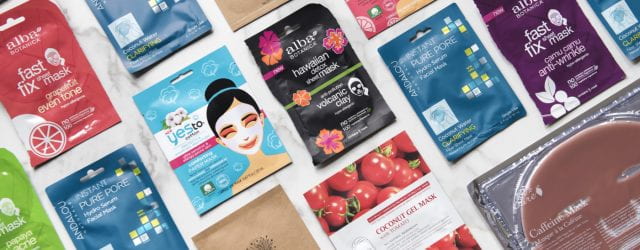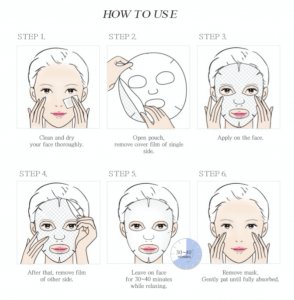What are Feminine Care Products
Menstruation is one of the most natural and healthy parts of life. In fact, in many cultures, the first period is often celebrated – as having your period for the first time signifies one’s journey to womanhood. In Croatia, a girl celebrating her first period would be treated to drinking her first red wine, meanwhile, in South Africa, a huge party will be thrown and the girl would have to stay inside the house for three days away from children and especially men, while her first period is ongoing (Bisaria, 2018). However, there is a prevalence of menstrual taboos and period shaming that has a massive impact on the products we use and how we dispose of them. This can affect our health, and end up in landfill, on beaches or polluting our oceans for decades.
Feminine care products include sanitary pads, pantyliners, tampons, period panties and menstrual cups. Tampons, in particular, takes longer to degrade than the lifespan of the women who wear it and the average woman will use over 11,000 disposable, one-time-use menstrual products in her reproductive lifetime (Winter, 2019). That is a lot of tampons.
So… what is the significance of this? Why am I talking about feminine care products in this Consupollution Blog?
Environmental Impact of Feminine Care Products

Infographic from Natracare
- Feminine care products such as pads, pantyliners and tampons, together with their packaging and individual wrapping generate more than 200,000 tonnes of waste per year. They all contain plastic. Pads in specific contain around 90% plastic (WEN, n.d.)!
- Approximately 20 billion feminine care products are thrown into the North American landfills annually (Luna Pads, n.d).
- According to The Eco Guide, a year’s worth of feminine care product can amount to up to a carbon footprint of 5.3 kg CO2 equivalents.
- Feminine care products can also be found in marine litter. In fact, the European Commission ranks feminine care products as the fifth most common found single-use plastics in the marine environment!
- The Royal Institute of Technology in Stockholm conducted A Life Cycle Assessment of tampons and found that the largest impact on global warming was caused by the processing of LDPE (low-density polyethylene, a thermoplastic made from the monomer ethylene) used in tampon applicators and also in the plastic back-strip of sanitary napkins, requiring high amounts of fossil fuel-generated energy (HA, 2011).
Environmentally friendly alternatives
Hence, it is important for us to venture out and look for environmentally friendlier alternatives to wasteful menstrual products that only pollute the Earth. One such example would be to use reusable sanitary pads that have been getting popular recently because of its eco-sustainability. There’s also a wider array of environmentally-friendly options becoming available. Menstrual cups like the Diva Cup have enjoyed a rise in popularity in part for their economical benefits (one menstrual cup for around £20 will last up to 10 years), but also for the fact they are completely zero-waste. This is because menstrual cups are soft silicone devices that are easily inserted inside the female vagina to collect the menstrual blood. All that has to be done is to pull it out like you would a tampon, wash it, and re-insert. The non-porous silicone means it doesn’t harbour bacteria, making it super safe and completely hygienic.
The Next Step
“Choice is everything,” says Celia Pool, co-founder of DAME, a reusable tampon applicator. “There isn’t a one-size-fits-all solution for women when it comes to menstrual products. There are different needs and requirements, even within one person’s cycle. You might want to wear your cup or pad during your lighter days, and your tampon during times when you are active. Or the other way round.”
Interestingly, currently, only about 5% of women are using reusable menstrual products. As with other single-use consumer products, the shift away from throw-away pads and tampons to reusable alternatives like cups or period-proof underwear won’t happen overnight. Hence, there is an urgent need to innovate and find sustainable and yet practical solutions to feminine hygiene challenges.
However, the problem with period stigma is that it often denies women to deal with the issues around menstrual health and hygiene. Open dialogue and conversation is the first step in changing the way women deal with menstruation and can create awareness around the need to make a switch.
For more information, take a look at this report done by Zero Waste Europe on Reusable and Toxic-Free Menstrual Products:
 Loading...
Loading...
References
Bisaria, A. (2018). 11 First Period Traditions From Around The World That Celebrate A Girl’s Journey Into Womanhood. [online] IndiaTimes. Available at: https://www.indiatimes.com/culture/11-first-period-traditions-from-around-the-world-that-celebrate-a-girl-s-journey-into-womanhood-338129.html [Accessed 4 Nov. 2020].
Winter, L. (2019). These are all the incredible ways period brands are reducing their impact on the oceans – and we salute them! [online] Glamour UK. Available at: https://www.glamourmagazine.co.uk/article/period-product-waste [Accessed 4 Nov. 2020].
Natracare (2018). Turning The Tide On Plastic Period Waste. [online] Natracare. Available at: https://www.natracare.com/blog/turning-the-tide-on-plastic-period-waste/ [Accessed 4 Nov. 2020].
WEN (n.d.). Environmenstrual. [online] Wen. Available at: https://www.wen.org.uk/environmenstrual/.
Luna Pads (n.d.). Our Story. [online] Aisle. Available at: http://lunapads.com/learn/why-switch?geoip_country=US.
European Commission (2018). Reducing Marine Litter: action on single use plastics and fishing gear. [online] European Commission. Available at: http://ec.europa.eu/environment/circular-economy/pdf/single-use_plastics_impact_assessment.pdf [Accessed 4 Nov. 2020].
Ha, T. (2011). Greeniology 2020: greener living today, and in the future, Melbourne University Press, Carlton, Vic.
Zero Waste Europe (2018). Reusable & toxic-free menstrual products. [online] Available at: http://zerowasteeurope.eu/wp-content/uploads/2018/08/Reusable-toxic-free-menstrual-products_August-2018.pdf [Accessed 4 Nov. 2020].









